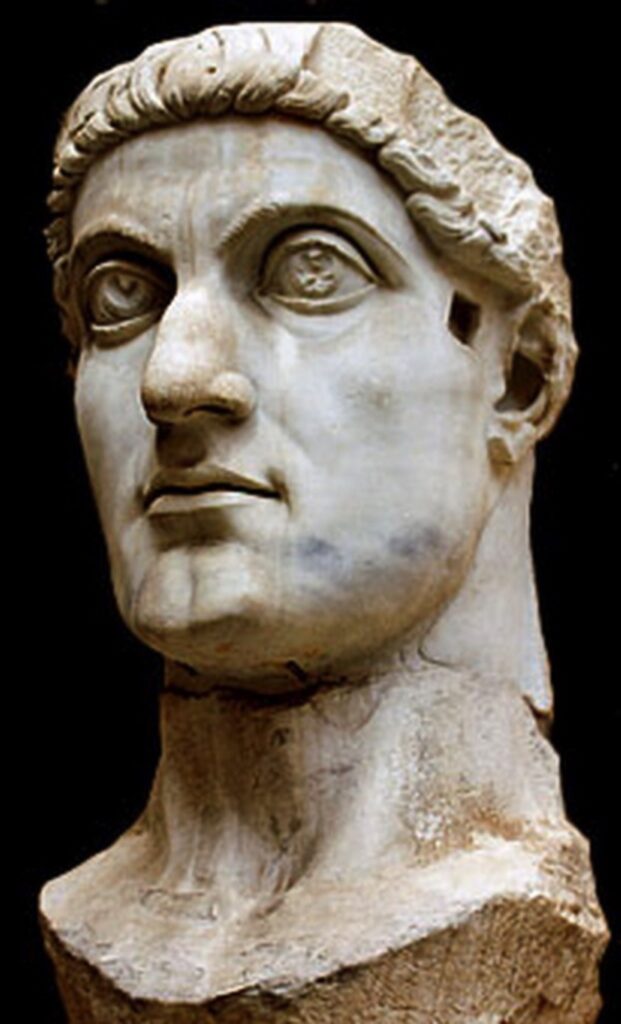 Son of a Greek officer, Constantius Chlorus, appointed Augustus in place of Galerius in 305 AD, and Helena, he was probably born in 280 in Naissus, Moesia. After living at Diocletian’s court and moving to Britannia, following his father, he was acclaimed emperor by the army in 306 AD, in a historical period of serious political tension. This was caused by friction with the previous emperor Maximian, who Constantine the Great defeated in 310 AD, and with his son Maxentius, remembered for the historic clash that took place in 312 at the Milvian Bridge where the new emperor was victorious. Tradition has it that it was revealed by a vision in the sky in which he saw a cross impressed in the sun accompanied by the inscription “in hoc signo vinces” (in this sign thou shalt conquer). The event is recounted only in work by the bishop Eusebius of Caesarea, a close collaborator of Constantine, but it became widely depicted by artists from the Renaissance onwards. After the battle of the Milvian Bridge, the Empire was ruled by two augusti: Constantine reigned over the West and Licinius over the East.
Son of a Greek officer, Constantius Chlorus, appointed Augustus in place of Galerius in 305 AD, and Helena, he was probably born in 280 in Naissus, Moesia. After living at Diocletian’s court and moving to Britannia, following his father, he was acclaimed emperor by the army in 306 AD, in a historical period of serious political tension. This was caused by friction with the previous emperor Maximian, who Constantine the Great defeated in 310 AD, and with his son Maxentius, remembered for the historic clash that took place in 312 at the Milvian Bridge where the new emperor was victorious. Tradition has it that it was revealed by a vision in the sky in which he saw a cross impressed in the sun accompanied by the inscription “in hoc signo vinces” (in this sign thou shalt conquer). The event is recounted only in work by the bishop Eusebius of Caesarea, a close collaborator of Constantine, but it became widely depicted by artists from the Renaissance onwards. After the battle of the Milvian Bridge, the Empire was ruled by two augusti: Constantine reigned over the West and Licinius over the East.
During the reign of Constantine, which lasted until 337 AD, the Christian religion was no longer only tolerated, but with the Edict of Milan, in 313 worshippers were guaranteed the right to profess their religion and the construction of new places of worship began, with the official adoption of the Christogram, the two initial letters of the word Christ in Greek, on the imperial insignia. A new relationship between Church and State was established with Constantine and some truths of faith of the Christian doctrine were proclaimed with the Council of Nicaea in 325 AD.